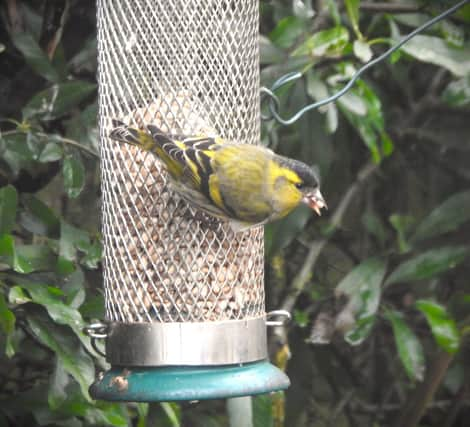On the Wildside: One of our prettiest finches – the siskin


Their calls are a repeated mix of ‘tsu’ and ‘tsu-weet’, which contrasts with the redpoll’s rather nasal buzzing trills given in flight. Redpolls will come to garden feeders but nowhere near a frequently as siskins will. And, if you think you have seen a serin (which is very rare indeed), then best think again as it is almost certainly a siskin. These tiny birds tend to be in mixed flocks foraging along woodland edge, riverside, and in parklands with damp woods or birch. They are generally in the upper tree canopy, and you hear them before you see them.
In winter, siskins will come to gardens where they take mostly peanuts and sunflower seed, and in this case they show well. Being a bit like a miniature greenfinch they sport yellows, greens, black, and white streaky plumage. A little like the greenfinch too, the males are showier than the slightly understated females. The notch in the tail is also quite noticeable at close quarters or in flight, and the black wings with bright yellow wing-bars and rump are very striking if seen in good light.
Advertisement
Hide AdAdvertisement
Hide AdThese are also very nimble little birds and hang from feeders a bit like the titmice. In recent weeks, the numbers visiting my wildlife garden have been increasing from just a fleeting glimpse of an occasional female to several mixed males and females. I am hoping the trend will continue and today they were joined by a goldcrest and a flock of long-tailed tits.
Siskins may stay to breed locally, but they do prefer conifer trees in which to nest and so are badly disadvantaged by the often mass removal of pines and other conifers from woodlands. There may be some inadvertent and unintended consequences of seeking to purify woods and plantations of non-native pines! Life is never so simple.
* Professor Ian D. Rotherham, researcher, writer & broadcaster on wildlife & environmental issues, is contactable on [email protected]; follow Ian’s blog (https://ianswalkonthewildside.wordpress.com/) and Twitter @IanThewildside